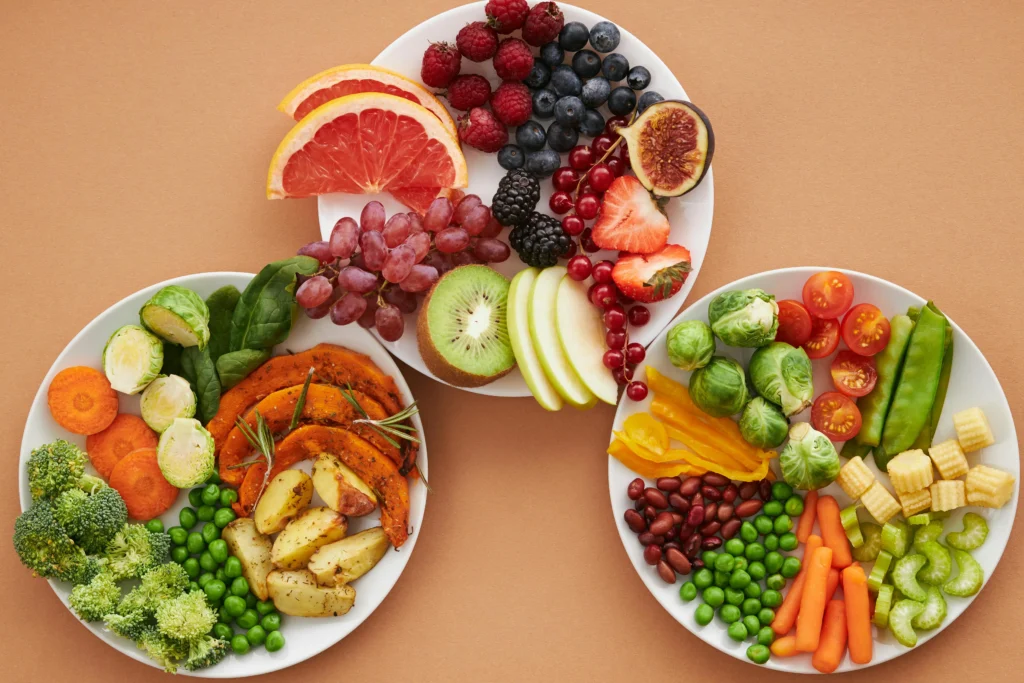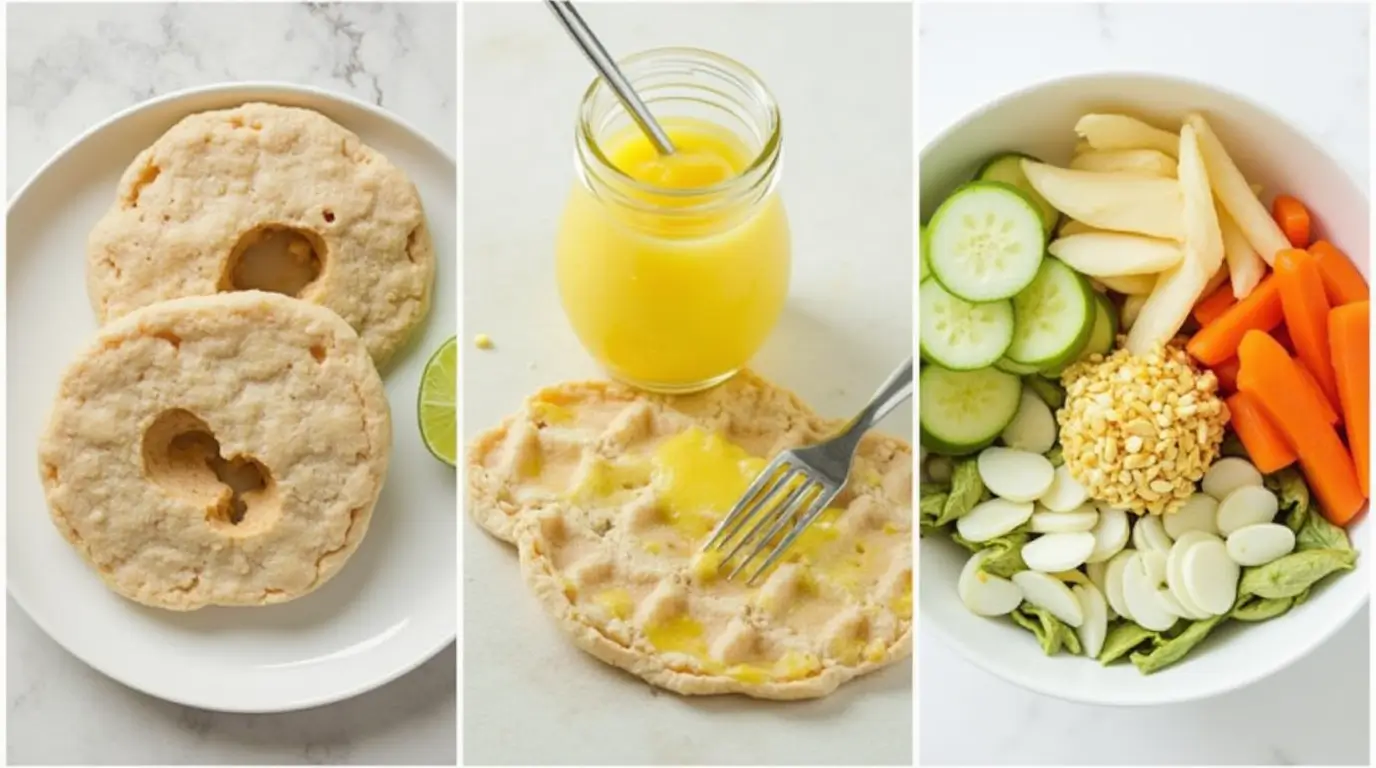Baby Lunch Ideas
Table of Contents
When your baby reaches the 6-month mark and begins exploring solids, lunchtime becomes a special opportunity to fuel growth, curiosity, and joy. Whether you’re following traditional weaning or baby-led weaning, choosing the right meals can be a fun (and sometimes challenging!) adventure. In this guide, we’ll share helpful Baby Lunch Ideas that are easy to prepare, nutritionally balanced, and baby-approved.
Why Focus on Lunch for Babies?
Lunch plays a vital role in shaping your baby’s appetite and daily rhythm. As your child begins eating two to three meals a day, lunchtime becomes a key nutritional checkpoint.
Benefits of a Balanced Baby Lunch:
- Introduces variety early to develop taste preferences
- Supports growth with essential nutrients
- Helps regulate digestion and sleep
- Provides bonding time during shared meals
- Encourages self-feeding and motor development
Whether you’re offering a puree or a soft finger food platter, well-planned Baby Lunch Ideas contribute to your child’s physical and emotional development.
5-Day Sample Baby Lunch Meal Plan (6–12 Months)
| Day | Meal Option | Texture | Nutrients Focus |
|---|---|---|---|
| Monday | Mashed avocado + soft-cooked quinoa | Puree/mashed | Healthy fats, fiber |
| Tuesday | Shredded chicken + sweet potato cubes | Finger foods | Protein, beta-carotene |
| Wednesday | Lentil puree + banana slices | Mixed textures | Iron, potassium |
| Thursday | Greek yogurt + peach puree + oats | Spoon-fed | Calcium, probiotics |
| Friday | Broccoli florets + rice + soft tofu | Self-feeding | Iron, folate, protein |
Adapt the portion sizes and textures according to your baby’s age and readiness. Younger babies may need smoother textures, while older ones enjoy more independence with finger foods.
Key Considerations for Baby Lunch Ideas
Creating lunch meals for babies isn’t just about flavor — it’s about nutrition, safety, and simplicity.
1. Nutrition First
Aim to include a mix of:
- Proteins: chicken, lentils, tofu, eggs
- Healthy fats: avocado, olive oil, nut butters (thinly spread)
- Fruits & veggies: a variety of colors
- Whole grains: oats, quinoa, brown rice
2. Texture Appropriateness
Consider your baby’s development stage:
- 6–8 months: smooth purees and soft mashed foods
- 8–10 months: thicker textures and small soft chunks
- 10–12 months: finger foods, soft cooked pieces
3. Allergen Introduction
Introduce common allergens (like peanut butter, eggs, or wheat) one at a time. Always monitor for reactions.

10 Easy Baby Lunch Ideas to Try
Here are ten nutritious and parent-approved Baby Lunch Ideas to try throughout the week:
1. Avocado & Banana Mash
Mash half an avocado with a ripe banana. It’s creamy, nutrient-dense, and full of healthy fats.
2. Mini Veggie Patties
Blend cooked quinoa, shredded zucchini, carrot, and egg into patties. Pan-fry with a little olive oil.
3. Soft Lentil and Carrot Puree
Cook red lentils with diced carrots until soft, then blend into a smooth or textured puree.
4. Scrambled Egg & Avocado Toast Strips
Use whole grain bread. Scramble the egg until fluffy and serve with mashed avocado on toast strips.
5. Mashed Sweet Potato & Ground Turkey
Steam sweet potato and mix with cooked ground turkey. Perfect balance of protein and vitamin A.
6. Pea and Mint Puree with Brown Rice
Steam peas and fresh mint, blend until smooth. Serve with soft brown rice.
7. Fruit & Yogurt Bowl
Mix full-fat plain Greek yogurt with mashed berries or diced peaches.
8. Oven-Baked Soft Veggie Sticks
Cut zucchini, carrot, and sweet potato into sticks, roast until soft. Great for baby-led weaning.
9. Soft Pasta with Hidden Veggie Sauce
Cook pasta like orzo or small shells, mix with a sauce of blended spinach, peas, and tomato.
10. Tofu & Broccoli Stir-In
Steam broccoli until soft, and cube tofu. Mix with cooked rice and drizzle with a tiny bit of olive oil.
Each of these Baby Lunch Ideas can be adjusted based on your baby’s preferences and developmental stage.
Nutrient Breakdown of Common Baby Lunch Ingredients
| Ingredient | Key Nutrients | Benefits |
|---|---|---|
| Avocado | Healthy fats, vitamin E | Brain development, skin health |
| Sweet potato | Beta-carotene, fiber | Eye health, digestion |
| Lentils | Iron, protein | Supports growth and red blood cells |
| Tofu | Calcium, iron | Bone strength, vegetarian protein |
| Greek yogurt | Calcium, probiotics | Gut health, immune support |
| Carrots | Vitamin A, fiber | Vision, immune system |
| Chicken | Protein, zinc | Muscle development, immunity |
Incorporating a mix of these ingredients will ensure your baby receives balanced nutrition at every lunch.
Meal Prep Tips for Busy Parents
Making lunch easier is all about smart prep! Here are tips to streamline your routine:
- Batch cook baby meals on Sundays
- Freeze in portions using silicone trays or jars
- Chop & prep veggies in advance
- Use leftovers wisely — some adult meals can be baby-modified
- Keep go-to recipes saved or printed for quick inspiration
Also, having ready-to-serve options like [Baby Juice 6 Months] can complement lunch and keep your baby hydrated.

Storing and Reheating Baby Lunches Safely
Storage:
- Refrigerate leftovers immediately (within 2 hours)
- Use baby-safe glass or BPA-free containers
- Label dates to track freshness
Reheating:
- Warm food gently (microwave or stovetop)
- Stir well and always test temperature before serving
- Avoid reheating more than once
Safety is just as important as nutrition when it comes to your baby’s meals.
When to Introduce Lunch to Your Baby
Most babies start eating lunch around 6–7 months after adjusting to breakfast or a solid snack. Signs of readiness include:
- Sitting upright unassisted
- Showing interest in your food
- Good head control
- Reduced tongue-thrust reflex
Start slow — even 2–3 spoonfuls can be enough in the beginning. As your baby grows, they’ll naturally begin to eat more.
Pairing Drinks with Baby Lunches
Water should be the go-to drink for babies over 6 months during lunch. For a healthy treat, you can occasionally serve Baby Juice 6 Months — formulated especially for babies without added sugars or artificial ingredients.
Avoid offering cow’s milk as a drink before 12 months. Breastmilk or formula should still be the primary source of nutrition until age one.
How Baby-Led Weaning Fits into Lunch
If you’re following the BLW approach, offer whole foods cut into safe shapes and textures that babies can grasp and chew.
Great Baby Lunch Ideas for BLW:
- Steamed carrot sticks
- Mini pancakes with fruit
- Avocado toast fingers
- Roasted veggie sticks
- Soft omelet slices
Need more inspiration? Check out [Baby-Led Weaning Recipes] for easy, stage-appropriate ideas that support independence.

Common Questions About Baby Lunch
How much should my baby eat for lunch?
Appetites vary — let your baby guide you. Start with 2–4 tablespoons and increase gradually.
What foods should I avoid at lunch?
Avoid:
- Honey (until 1 year)
- Choking hazards (whole grapes, nuts)
- Salty or spicy foods
- Processed meats or sugar-loaded items
Can I feed my baby the same thing every day?
While some repetition is fine, variety is key to exposing your baby to new tastes and nutrients.
Final Thoughts: Baby Lunch Ideas Made Simple and Joyful
Crafting healthy and delicious Baby Lunch Ideas doesn’t have to be complicated. With just a bit of planning and creativity, you can create meals that delight your baby, meet their nutritional needs, and make your day easier. Whether you go the puree route, embrace baby-led weaning, or mix both, the goal is always the same: happy, nourished little ones.
Mealtime is more than just food — it’s a moment of connection, discovery, and care. Enjoy it!

